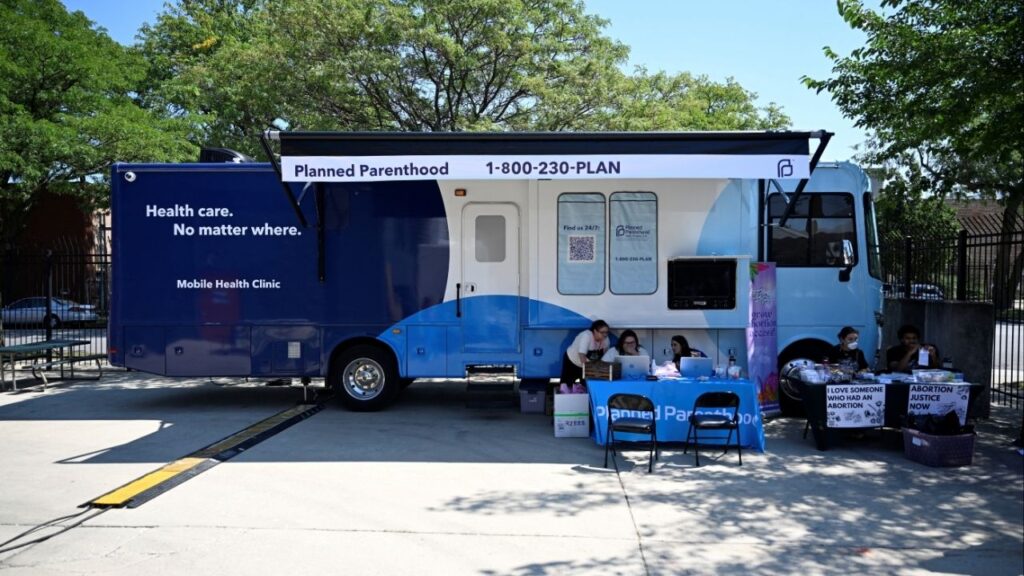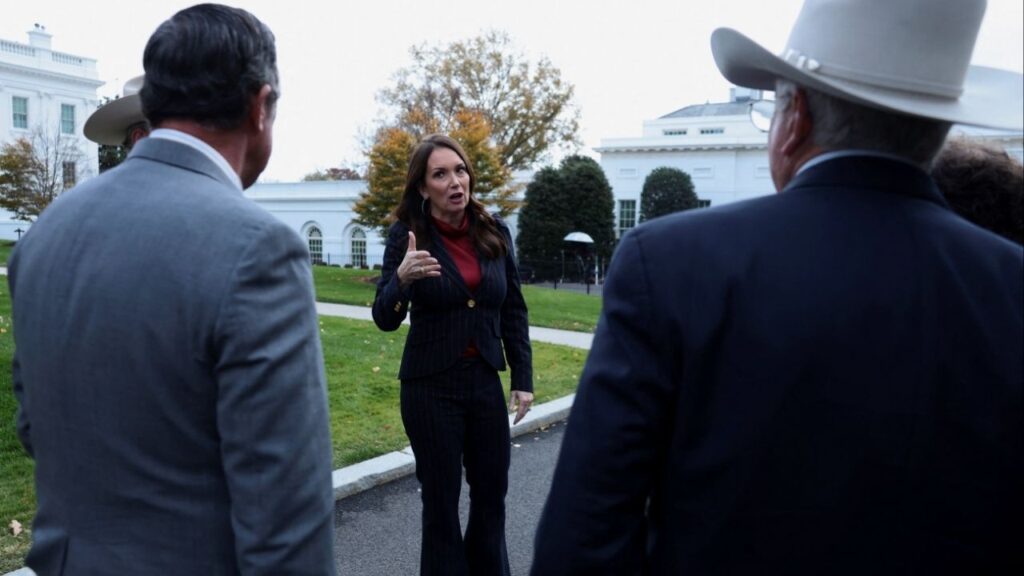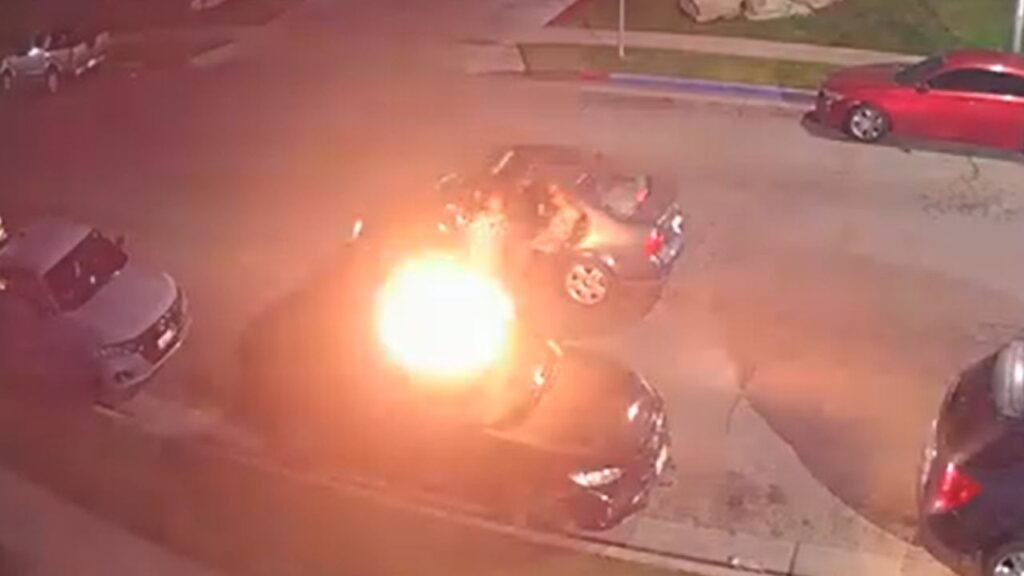California school districts grapple with declining enrollment, forcing tough decisions on campus closures and budget cuts. (CalMatters/Carlin Stiehl)

- Enrollment in California's K-12 public schools has dropped by 461,000 students over the past two decades, with further declines expected.
- School closures disproportionately affect low-income and Black communities, raising concerns about educational equity and neighborhood impact.
- Some districts, like Azusa Unified and Inglewood Unified, have found success in careful planning and community engagement during school closures.
Share
|
Getting your Trinity Audio player ready...
|
When the superintendent in San Francisco Unified proposed closing schools recently, parents launched a prolonged — and successful — protest. The uproar may have died down for now, but the issue is likely to erupt at school boards across the state — and some say that’s a good thing.

Carolyn Jones
CalMatters
Declining enrollment, the end of pandemic relief grants and state budget uncertainty have combined to put hundreds of California school districts in precarious financial straits. Closing schools is never a popular option, but for some districts it may be the only way to avoid the state seizing control of operations. When the state takes over a district, the school board loses power and a state-appointed administrator makes cuts until the budget is balanced. A takeover could last a decade.
“This is the big thing that we’re going to be dealing with in California education over the next few years. The declines in enrollment that we have seen so far pale in comparison to the declines the state is projecting,” said Carrie Hahnel, a senior fellow at Policy Analysis for California Education. “In some areas, the declines will be severe. And I don’t see how we manage those kinds of reductions without closing schools.”
The number of students enrolled in California’s K-12 public schools has dropped by 461,000 students — or 7% — over the past two decades. Lower birth rates, declines in immigration and an outflow of families from California have all contributed. Enrollment is expected to drop even further over the next decade, according to the state Department of Finance, to just over 5 million students — a decline of nearly 20% since the peak in the early 2000s.
The declines have hit some regions harder than others. San Francisco, Oakland, Los Angeles, San Jose and San Diego have all experienced steep declines in enrollment, in part due to a high cost of living that’s led families to move to less expensive areas. In San Francisco, the lure of private schools has also made a significant dent in public school enrollment: Roughly 40% of the children in the city attend private school, compared to about 9% statewide.
Because California funds its schools based on attendance, fewer students equals less money. Pandemic relief grants — totalling more than $13.5 billion in California — offered a buffer for many school districts facing financial hardship, but those grants expire this year. Meanwhile, the state education budget may dip in the coming years due to a shaky economy. Gov. Gavin Newsom largely protected schools from budget cuts this year, but there’s no guarantee that will continue next year.
“In some areas, the declines will be severe. And I don’t see how we manage those kinds of reductions without closing schools.”
Carrie Hahnel, senior fellow at policy analysis for California Education
Closing under-enrolled, half-empty schools is an obvious way for school districts to save money. A bit of the savings comes from facilities costs, such as utility bills and maintenance, but the bulk comes from staff. By reassigning or laying off teachers, districts can consolidate programs and lower their payroll costs. Districts can also lease or sell the vacant schools to generate revenue.
But closing schools nearly always sparks impassioned protests from families, students, teachers and the community. Schools are often the heart of a neighborhood, and a closure — especially in a neighborhood that’s already struggling — can be a significant blow. A closed school often means that students must travel further to get to their new school, and adjust to new teachers and a new campus culture. The experience can be deeply disruptive to students as well as teachers and parents.
Related Story: As California Spends Billions on High-Needs Students, Calls Grow for More ...
Impact on Black, Low-Income Students
It’s often low-income and Black communities that are most affected by school closures, research shows. That’s partly because those neighborhoods have seen some of the greatest declines in enrollment, but some see it as part of a long history of disinvestment in Black students’ education.
“If they invested in the schools they want to close, maybe the district wouldn’t have a problem with declining enrollment,” said Brandie Bowen-Bremond, policy director for Coleman Advocates, a nonprofit that promotes policies related to families of color in San Francisco. Tutoring, wellness centers, social workers and other services would make the under-enrolled schools more attractive to local families and they might be less likely to move away or enroll their children in charter schools, she said.
Coleman Advocates helped fight proposed school closures in San Francisco Unified last month, a battle that resulted in the superintendent’s resignation and a promise from the new superintendent that the district wouldn’t close schools this year.

The California Teachers Association also opposes school closures in nearly all cases. Instead of closing schools, districts should look to lower class sizes, push for more education funding from the state, and look for creative solutions such as partnering with cities to open libraries, parks and community centers at under-used school campuses, the union said.
“Closing schools is the last thing we should be doing,” said David Goldberg, president of the California Teachers Association. “Schools are a safety net in so many communities. These schools have a whole ecosystem, a whole history in a community. Disrupting that is a setback that is hard to undo.”
Related Story: California’s Needy School Districts Back $10B Prop 2 Even Though It ...
Tough Choices in Oakland
But for districts that have already made steep cuts, and are facing grim enrollment projections, school closures may be inevitable. Between 2012 and 2022, California school districts closed nearly 700 schools, and more are almost certain to come. Oakland Unified went through a painful round of school closures three years ago, and the district is bracing for more as it looks to trim a $95 million budget deficit and avoid another state takeover.
The district’s enrollment has dropped from 50,000 students in the early 2000s to just 34,000 last year. Meanwhile, the district maintains 77 schools, one of the lowest students-per-school ratios in the state. Fontana Unified, for example, has 46 schools for about the same number of students. Moreno Valley Unified, also with about the same enrollment, has 40 schools.
“I’m a firm believer that solvency is the foundation of quality,” Superintendent Kyla Johnson-Trammell said. “It’s pretty straightforward. If we fail to make some of the necessary and difficult cuts, we’ll head toward insolvency.”
She expects pushback from the community, but believes that students, teachers and families will be better off in the long run. Closures will free up more money for teacher raises, workforce housing at vacant school sites and improved academic and extracurricular offerings at existing schools.
“To think that there’s some way we can do this where everyone’s going to be happy is fantasy,” Johnson-Trammell said. “But we can be transparent, we can be honest, we can lead with respect and compassion. But we cannot lose sight of the economics.”
The hardest part for school boards might not even be closing schools. It might come later — ensuring a smooth transition for displaced families and creating long-term financial plans so the district doesn’t go through the same upheaval next year.
Districts need to consider even the smallest details, like whether the merged school will have a new mascot, or how new families will be included in school events, Hahnel and her colleagues said. And throughout the process, districts need to include teachers and parents at every step, she said.
Upsides of Closures at Azusa Unified
Azusa Unified, a predominantly low-income and Latino district in Los Angeles County, recently managed to close schools with relatively little tumult, thanks in part to meticulous planning. With enrollment dropping from about 12,000 to 6,000 over the last two decades, the need to close schools was inevitable, but a transparent process minimized the disruptions, Superintendent Arturo Ortega said.
The key, Ortega said, was a planning committee made up of parents, union representatives and district administrators, who held a series of community meetings to hear concerns and suggestions. The committee made clear the need for school closures, live-streamed meetings on YouTube and kept a regularly updated website. After months of discussions, the committee submitted recommendations to the school board, which approved the plan.
The result was a series of closures, mergers and school relocations that Ortega said has led to a slew of upsides: the high school baseball team won the division championship; teachers have more opportunities to collaborate; elementary schools have improved art programs and science labs; the middle school has a new college and career center, science lab and improved sports field; and the high school has more Advanced Placement classes, career pathways and a stronger sports program.
“It was important for us that our community understood the ‘why’ behind the school reorganization process,” Ortega said. “Our ‘why’ was to increase and improve our programs and facilities.”
Related Story: What Happens When California Schools Call for the Police?
Closures, Opportunities in Inglewood

The story of Inglewood Unified is both a cautionary tale for districts that refuse to address declining enrollment, and a success story for those who are navigating the closure process. A dozen years ago, faced with fewer students and a constricting budget, the school board opted not to close schools or make budget cuts and instead borrowed $29 million from the state to close a budget gap. As a condition of the loan, the state took over district operations, appointing its own administrator and stripping all but advisory power from the school board.
James Morris is the ninth state-appointed administrator in the role, taking over two years ago. He closed one school and plans to close five more next year. There was resistance, he said, but he had little choice: Two decades ago the district had 18,000 students; now, it’s down to 7,000.
“I’m old and I’m tough and I’m going to stay here until the job is done,” said Morris, a former assistant superintendent at Los Angeles Unified. “The children in this district are so full of hope and promise, they deserve the best schools we can give them.”
Closing schools has meant laying off staff and closing schools that had expensive maintenance needs. It also stoked the wrath of the community, leading to marathon school board meetings with hundreds of anguished speakers.
But the school closures have allowed the district to invest in the new merged schools, modernizing campuses and adding resources. For example, Woodworth-Monroe Academy, a merged TK-8 school, now has a wellness center and more clubs and activities for students. Inglewood High School now has a marching band with 100 students, and a new design, technology and entrepreneur academy sponsored by Andre “Dr. Dre” Young and music recording mogul Jimmy Iovine.
And the community has come around, at least a little. The alumni association of Morningside High, one of the high schools slated to close, actually endorsed its closure because it means students will have more opportunities.
“You can’t have a world-class city if you don’t have a world-class education system,” Morris said. “And that’s what our job has to be.”
About the Author
Carolyn Jones covers K-12 education at CalMatters. A longtime news reporter, she’s covered education for nearly a decade, focusing on everything from special education to state funding policies to inequities in student achievement.
About CalMatters
CalMatters is a nonprofit, nonpartisan newsroom committed to explaining California policy and politics.
RELATED TOPICS:
Categories

Texas Camp To Reopen After Flood That Killed 27 Children

US Postal Service Using 2,600 EVs for Mail Deliveries

















